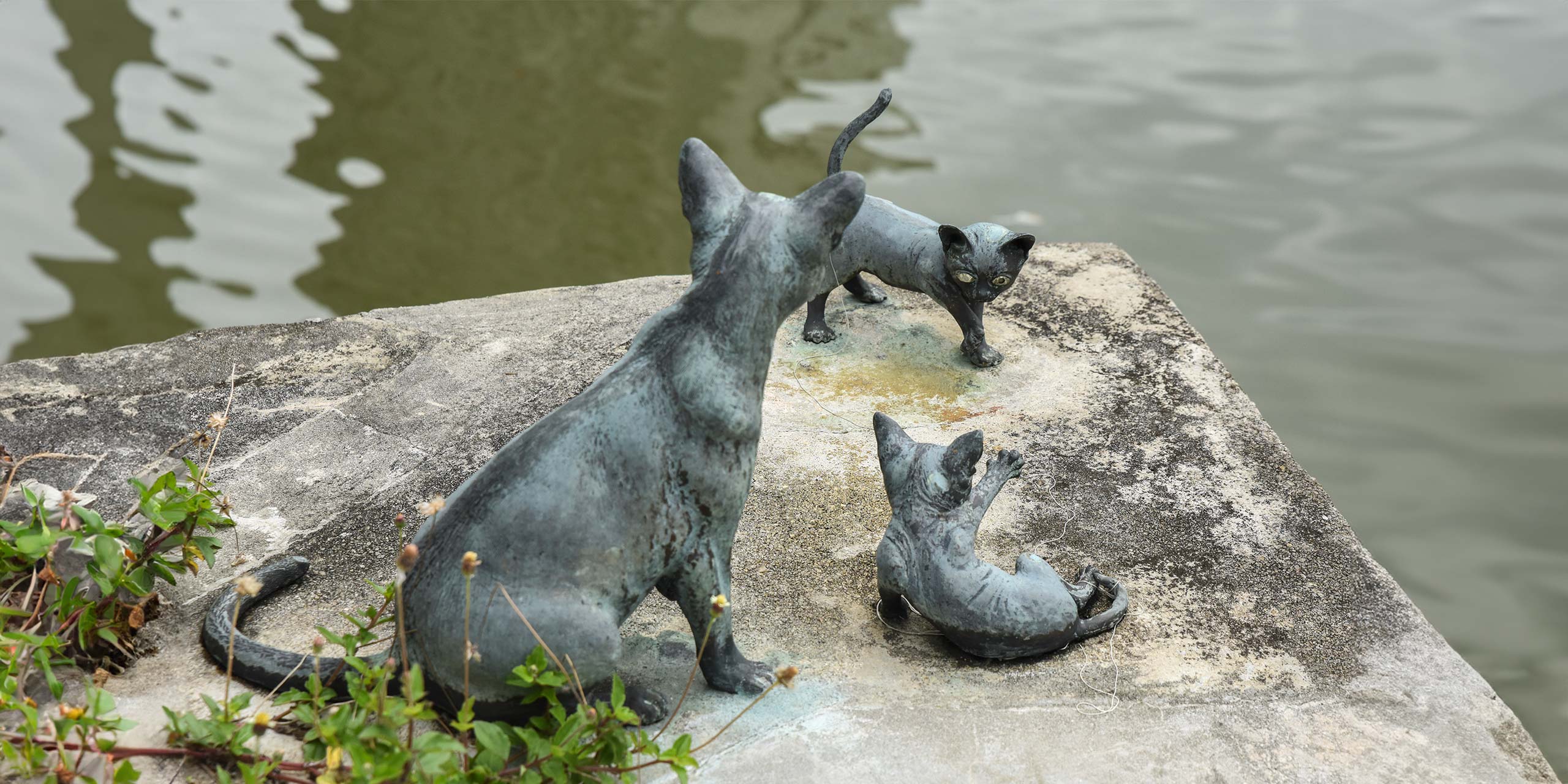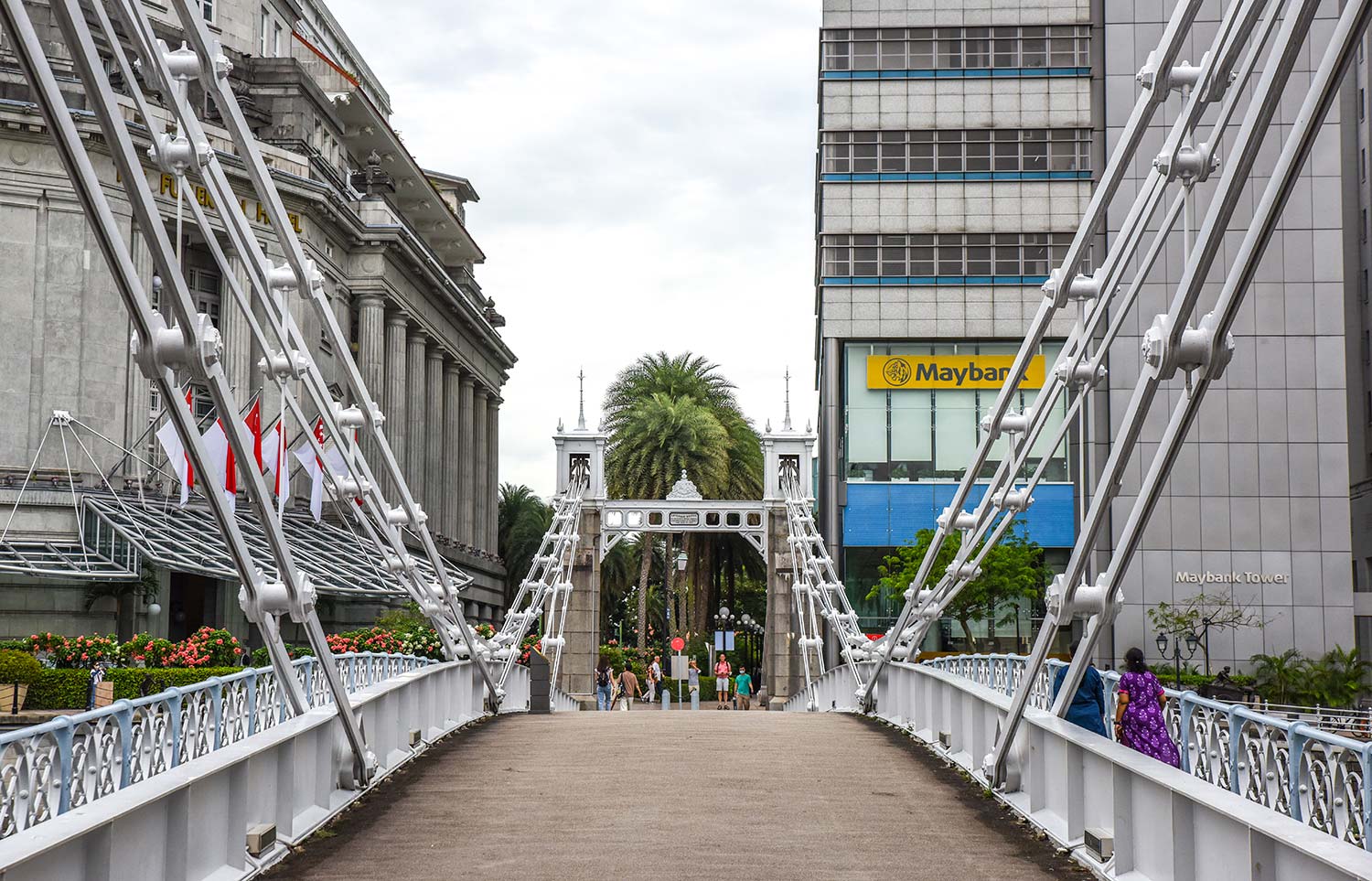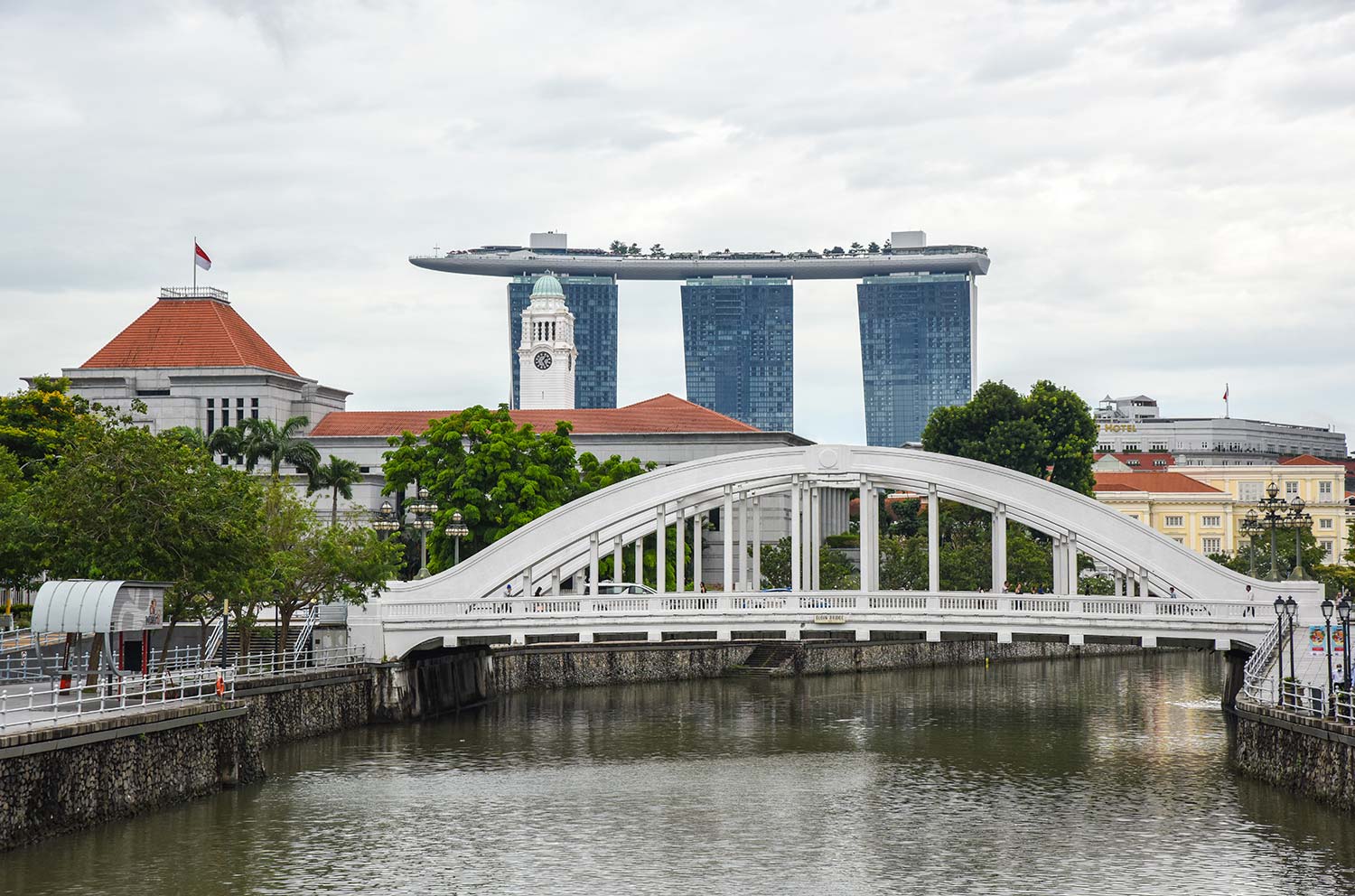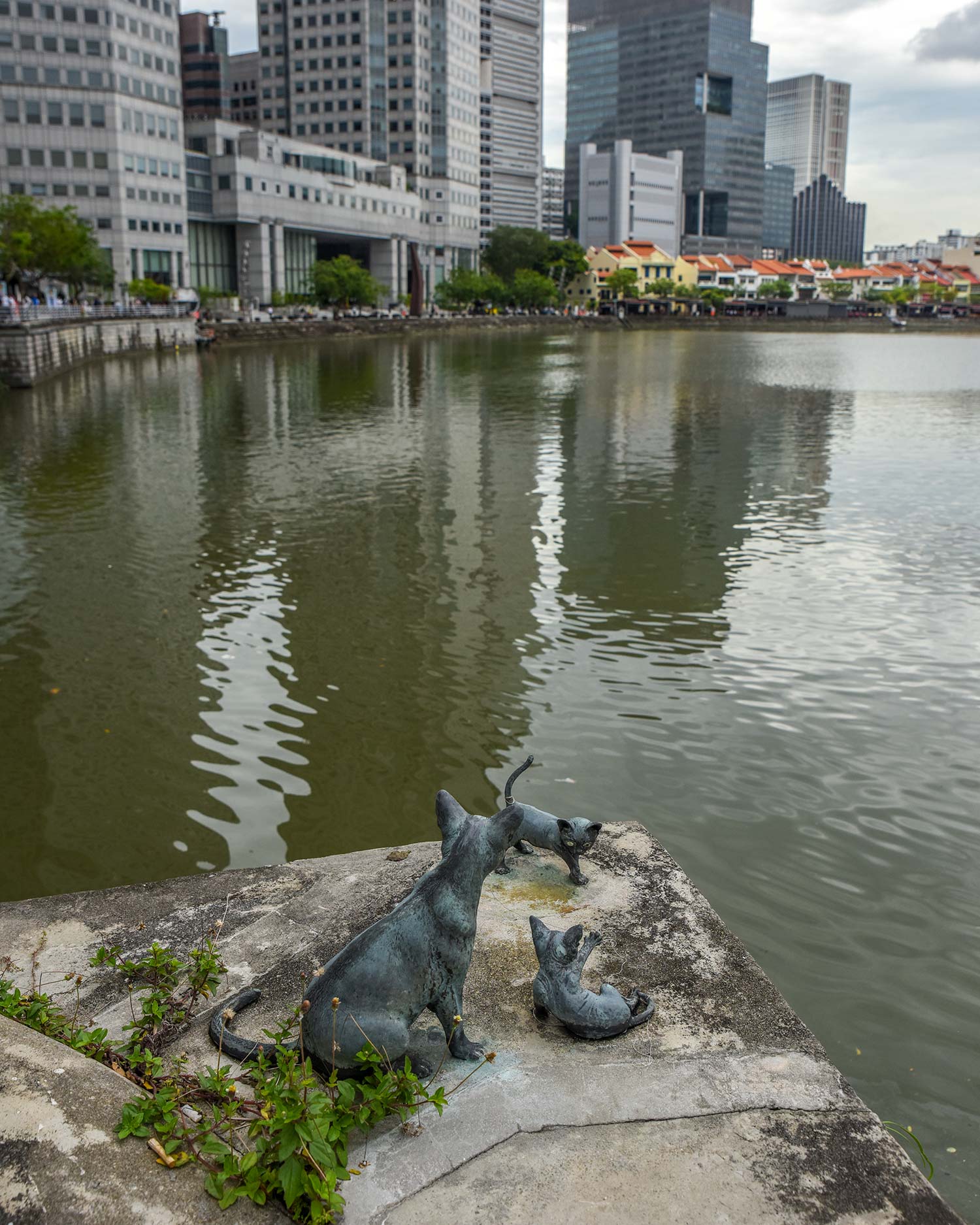
Singapore is one of the world’s most marketable travel destinations, a futuristic city with unique attractions. That’s why I stood by its waterfront, in utter confusion, staring at a motionless feline. Of all the ways Singapore could sell itself to the world, how did it end up with a tiny cat as its tourism mascot?
Its name is Kucinta. And 34 years ago, this kitty became a national symbol, only to be engulfed in a bizarre controversy involving lies, corruption, smuggling, and world records. Nowadays, Kucinta’s only obvious presence within the city-state is a small statue on the edge of the Singapore River.


Each day, thousands of tourists pass that monument, which enjoys a prominent position alongside the Cavenagh footbridge near famous attractions like the Merlion statue, Marina Bay, Boat Quay, and the Asian Civilisations Museum. Yet few, if any, of those foreign visitors have a clue about its ever-so-curious back story.
Granted, tourism mascots are famously hit or miss. Australia’s Ruby the Roo was a safe choice given the widespread recognition and appeal of the country’s native kangaroos. There was a far more lukewarm response in Nepal when its government, in 2020, decided to select the mythical Yeti as its tourism mascot. Similar mixed reactions emerged in Macau when it unveiled its odd mascot, Mak Mak, which fused a lighthouse design with a black-faced thornbill bird.
Yet none can compete with Kucinta for sheer absurdity. Kucinta is a Singapura breed of cat. Singapura was the Malay word for the landmass now known as Singapore. This breed has a brilliant coat, of brown or ivory hue, and uniquely large eyes and ears, as depicted in its riverside likeness.
Singapura is so tiny that they’re listed in the Guinness Book of World Records as the smallest breed on the planet. They’re also reputedly so rare that some have sold for up to USD$10,000. Even in Singapore, this cat is uncommon to the degree that the national zoo once held an exhibit of Singapuras, with a zoo spokesperson explaining that most locals would never have seen one.


But after all these years, one question keeps burning: are Singapuras even Singaporean? That directs us back to Singapore’s mascot fiasco. In 1988, the Cat Fanciers Association officially classified the Singapura. That prestigious honor meant it was registered as a pedigree originating from Singapore.
Yet now, even the Singapore Government website that tells Kucinta’s tale admits that the Singapura breed is “shrouded in mystery”. This uncertainty is due, in large part, to the shadowy actions of an American couple based in Singapore.
Their names were Hal and Tommy Meadows. In the 1970s, they claimed they returned to the US from Singapore with three specimens of a previously undocumented cat breed. Then they began to breed this unearthed feline treasure.
For years, their dodgy cat caper rolled on undetected. In 1990, the Singapore Tourist Promotion Board picked the Singapura as its new national tourism mascot. This prompted Government officials to investigate the background of the Singapura, and the Meadows, who claimed to have discovered its first three specimens.

Records exposed that, when they moved to Singapore in 1974, they had brought those same three cats into the country from the US. Further scrutiny found that Tommy Meadows had misled Singaporean authorities about her husband’s smuggling of cats in and out of the city-state.
This couple faced no charges. Instead, their misdeeds were overlooked so Singapore could plough ahead with its new mascot. It soon gave this Singapura the name of Kucinta, which blends the Malay words for cat (Kuching) and love (Cinta).
But Kucinta never took off. The mascot wasn’t widely embraced by the public. Perhaps it was ill-conceived, or maybe it was karma which derailed its run at celebrity status.
So tepid was the public reception that Singapore abandoned plans to line the Singapore River with artful depictions of Kucinta. Now just the one remains. Not that anyone takes much notice of that sculpture. Kucinta remains as a low-key reminder of this oddball caper and the cat’s former status as a tourism icon.
